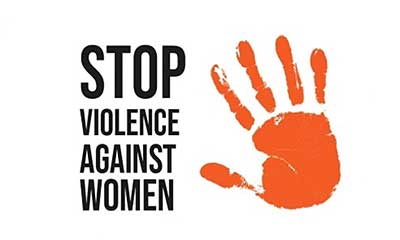Relevance: GS-1: Social Empowerment / GS-2: Welfare Schemes for Vulnerable Sections of the population by the Centre and States and the Performance of these Schemes
Key phrases: Workplace harassment, Dowry deaths, Commodification, Deprivation
Why in news?
- 30% rise in complaints of crimes against women in 2021 as compared to 2020
Analysis:
What is crime against women?
- United Nations defines violence against women as “any act of gender-based violence that results in, or is likely to result in, physical, sexual or mental harm or suffering to women, including threats of such acts, coercion or arbitrary deprivation of liberty, whether occurring in public or in private life”.
Causes of crime against women
- Historically unequal power relations: The political, economic and social processes that have evolved over many centuries have kept men in a position of power over women.
- Control of women’s sexuality: Many societies use violence as a way to control a woman’s sexuality, and likewise in many societies violence is used to punish women who exhibit sexual behaviour, preferences and attitudes that violate cultural norms.
- Cultural ideology: Culture defines gender roles and some customs, traditions and religions are used to justify violence against women when women transgress these culturally assigned roles.
- Doctrines of privacy: The persistent belief in many societies that violence against women is a private issue seriously impedes attempts to eradicate this violence.
- Patterns of conflict resolution: Links have been identified between violence against women in the home and community in areas that are in conflict or that are militarised.
- Government inaction: Government negligence in preventing and ending violence against women establishes a tolerance of violence against women throughout the community.
What statistics speak about crimes against women?
- Nearly 31,000 complaints of crimes committed against women were received by the National Commission for Women (NCW) last year, the highest since 2014.
- The highest number of complaints related to the right to live with dignity and domestic violence were received from Uttar Pradesh that accounts for over half of the overall reported crimes.
The broad categories of crime:
- Outraging the modesty of women or molestation
- Rape and attempt to rape
- Police apathy against women
- Complaints of cybercrimes
- Domestic violence
- Issues in living with dignity
Crimes identified under Indian Penal Code
- Rape (Section 376 IPC)
- Kidnapping and Abduction for different purposes (Section 363-373 IPC)
- Homicide for Dowry, Dowry Deaths or their attempts (Section 302/304-B IPC)
- Torture, both mental and physical (Section 498-A IPC)
- Molestation (Section 354 IPC)
- Sexual Harassment (Section 509 IPC)
- Importation of Girls (up to 21 years of age) (Section 366 B IPC)
Legal protection from crimes against women
- Sexual Harassment of Women at Workplace (Prevention, Prohibition and Redress al) Act, 2013 was passed with the aim of giving insurance to the ladies at work environment.
- Acid Attack: Section 326B of the Indian Penal Code, 1860 deals with utilization of corrosive substances and intentional tossing or endeavouring to toss corrosive separately.
- Protection of Women from Domestic Violence Act, 2005: This Act protects women from any act/conduct/omission/commission that harms, injures or potential to harm is to be considered as domestic violence.
- Dowry deaths: Dowry Prohibition Act, 1961 has stringent provisions for punishment and prevention of dowry-related atrocities against women.
National initiatives to curb violence against women
- National Commission for Women: In January 1992, the Government set-up this statutory body with a specific mandate to study and monitor all matters relating to the constitutional and legal safeguards provided for women.
- Reservation for Women in Local Self Government: The 73rd Constitutional Amendment Acts passed in 1992 by Parliament ensure one-third of the total seats for women in all elected offices in local bodies whether in rural areas or urban areas.
- The launch of the National Mission for Empowerment of Women in March 2010 is an important development that will provide the muchrequired fillip to a coordinated assessment of current government interventions and aligning future programmes.
Government schemes for women empowerment:
- One Stop Centre Scheme: One Stop Centres (OSC) are intended to support women affected by violence, in private and public spaces, within the family, community and at the workplace.
- Beti Bachao Beti Padhao Scheme: Beti Bachao, Beti Padhao is a campaign of the Government of India that aims to generate awareness and improve the efficiency of welfare services intended for girls in India.
- UJJAWALA: A Comprehensive Scheme for Prevention of trafficking and Rescue, Rehabilitation and Re-integration of Victims of Trafficking and Commercial Sexual Exploitation.
- SWADHAR Greh: A Scheme for Women in Difficult Circumstances
- Mahila police Volunteers (MPV): An MPV will serve as a public-police interface in order to fight crime against women.
- Mahila Shakti Kendra (MSK) aims to empower rural women with opportunities for skill development and employment.
Way ahead
- Only legislation and law enforcement agencies cannot prevent the incident of crime against women.
- There is need of social awakening and change in the attitude of masses, so that due respect and equal status is given to women.
- This awakening can be brought by education campaign among youth making them aware of existing social evils and the means to eradicate same.
- Mass media can play an active role here as in the present days it has reached every corner of the nation.
- Various NGOs can hold a responsible position here by assigning them with the task of highlighting socio-economic causes leading to such crimes and by disseminating information about their catastrophic effect on the womanhood and the society at large.
Source: Indian Express








